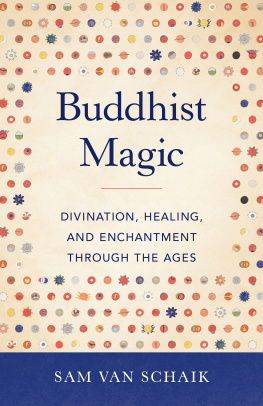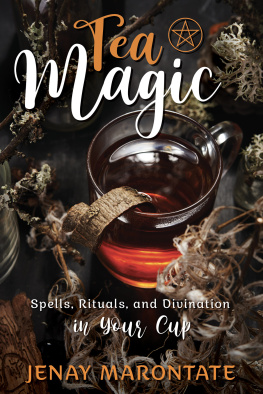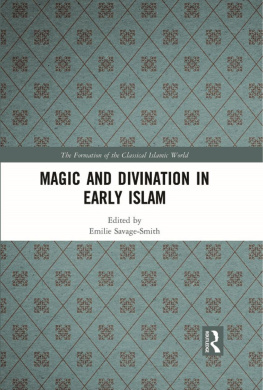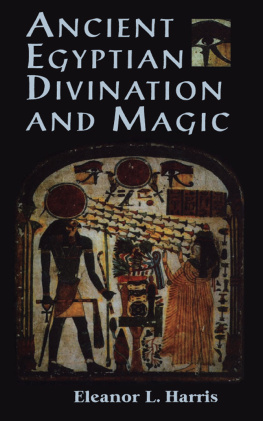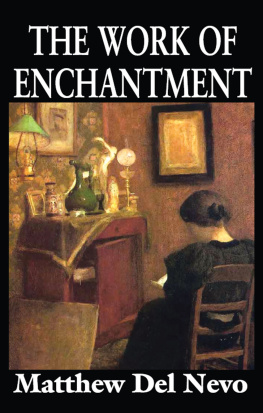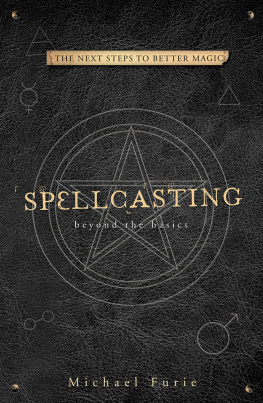Sam Van Schaik - Buddhist Magic: Divination, Healing, and Enchantment through the Ages
Here you can read online Sam Van Schaik - Buddhist Magic: Divination, Healing, and Enchantment through the Ages full text of the book (entire story) in english for free. Download pdf and epub, get meaning, cover and reviews about this ebook. year: 2020, publisher: Shambhala, genre: Religion. Description of the work, (preface) as well as reviews are available. Best literature library LitArk.com created for fans of good reading and offers a wide selection of genres:
Romance novel
Science fiction
Adventure
Detective
Science
History
Home and family
Prose
Art
Politics
Computer
Non-fiction
Religion
Business
Children
Humor
Choose a favorite category and find really read worthwhile books. Enjoy immersion in the world of imagination, feel the emotions of the characters or learn something new for yourself, make an fascinating discovery.
- Book:Buddhist Magic: Divination, Healing, and Enchantment through the Ages
- Author:
- Publisher:Shambhala
- Genre:
- Year:2020
- Rating:3 / 5
- Favourites:Add to favourites
- Your mark:
- 60
- 1
- 2
- 3
- 4
- 5
Buddhist Magic: Divination, Healing, and Enchantment through the Ages: summary, description and annotation
We offer to read an annotation, description, summary or preface (depends on what the author of the book "Buddhist Magic: Divination, Healing, and Enchantment through the Ages" wrote himself). If you haven't found the necessary information about the book — write in the comments, we will try to find it.
Buddhist Magic: Divination, Healing, and Enchantment through the Ages — read online for free the complete book (whole text) full work
Below is the text of the book, divided by pages. System saving the place of the last page read, allows you to conveniently read the book "Buddhist Magic: Divination, Healing, and Enchantment through the Ages" online for free, without having to search again every time where you left off. Put a bookmark, and you can go to the page where you finished reading at any time.
Font size:
Interval:
Bookmark:
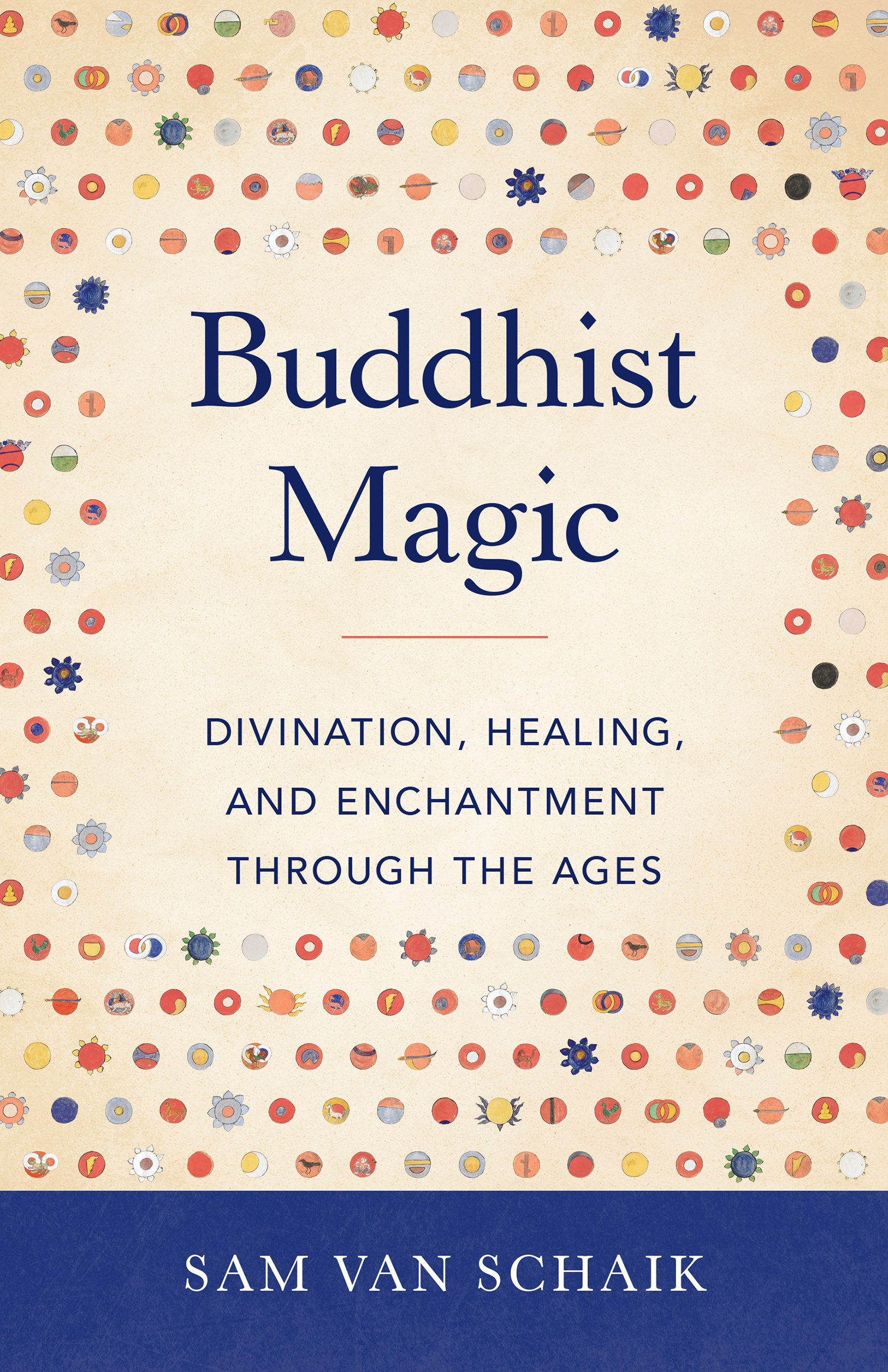
After two decades of regular and intimate contact with the ancient Buddhist manuscripts held at the British Library, Sam van Schaik is uniquely positioned to write this book. The spell books and amulets he presents are gateways into the Buddhism of daily life. These are not the canonical works taught at monastic colleges and promoted around the world; they are the personally held writings of individual Buddhists with particular concerns living in specific locales. In van Schaiks skilled hands, the category of Buddhist magic sheds light on a fundamental world of Buddhist beliefs and practices that is rarely seen.
Jacob Dalton, author of
The Gathering of Intentions: A History of Tibetan Tantra
An important book about what many dont know about Buddhism in the Western world. Buddhist Magic affirms that there is more to Buddhism than what meets the eye. With careful attention and confirming Buddhist scripture, van Schaik successfully brings to light the shamanic realities of Buddhism that underline every transmission. This book is a treasure.
Zenju Earthlyn Manuel, author of
The Way of Tenderness: Awakening through Race, Sexuality, and Gender
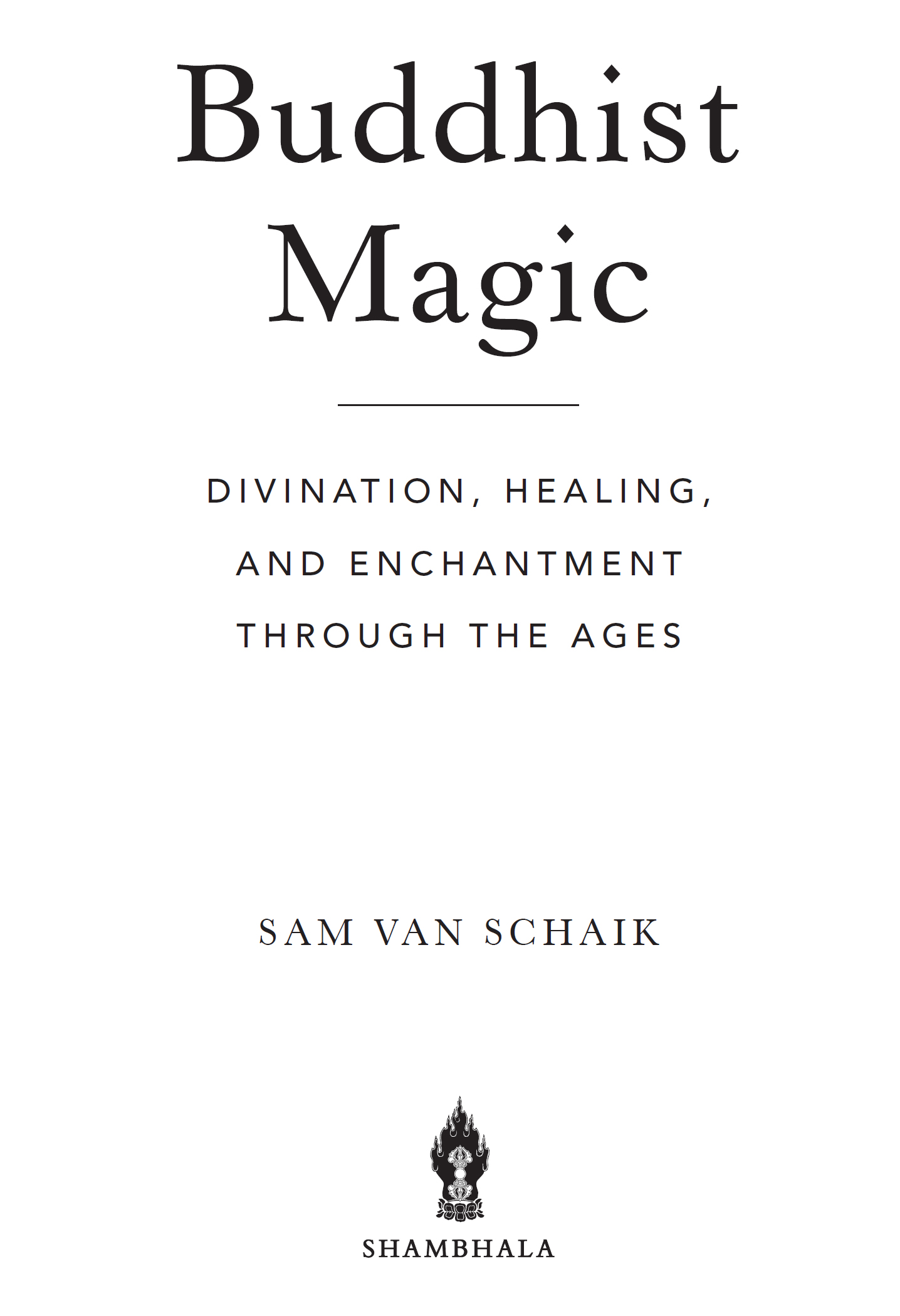
Shambhala Publications, Inc.
4720 Walnut Street
Boulder, Colorado 80301
www.shambhala.com
2020 by Sam van Schaik
Cover art: Detail of Tamra phichai songkhram, British Library
Cover design: Kate White
Interior design: Claudine Mansour Design
All rights reserved. No part of this book may be reproduced in any form or by any means, electronic or mechanical, including photocopying, recording, or by any information storage and retrieval system, without permission in writing from the publisher.
Library of Congress Cataloging-in-Publication Data
Names: van Schaik, Sam, author.
Title: Buddhist magic: divination, healing, and enchantment through the ages / Sam van Schaik.
Description: First edition. | Boulder, Colorado: Shambhala Publications, 2020. | Includes bibliographical references and index.
Identifiers: LCCN 2019045976 | ISBN 9781611808254 (trade paperback)
eISBN 9780834842816
Subjects: LCSH: MagicReligious aspectsBuddhism.
Classification: LCC BQ4570.M3 V36 2020 | DDC 294.3/43dc23
LC record available at https://lccn.loc.gov/2019045976
a_prh_5.5.0_c0_r0
To Anne
The first thing a student of magic learns is that there are books about magic and books of magic.
And the second thing he learns is that a perfectly respectable example of the former may be had for two or three guineas at a good bookseller, and that the value of the latter is beyond rubies.
J ONATHAN S TRANGE AND M R N ORRELL
Taking my cue from Suzanna Clarkes novel about professional magicians, I want to point out that this is a book about magic and definitely not a book of magic. Or to be more precise, its a book about a book of magic. That book is a Tibetan book of spells, written over a thousand years ago. I first came across it while cataloguing the Tibetan tantric manuscripts with Jacob Dalton, in a project that ran from 2003 to 2005, and owed much to Burkhard Quessel and Susan Whitfield at the British Library, as well as Cathy Cantwell, Robert Mayer, and Ulrich Pagel. In 2009, I wrote a couple of posts on my blog (https://earlytibet.com) exploring this manuscript, which started some interesting discussions and helpful responses, in particular from Dan Martin and Pter-Dniel Sznt.
The next time I returned to this Tibetan book of spells was under the aegis of a new research project, Beyond Boundaries: Religion, Region, Language and the State, funded by the European Research Council in 2014. One of the themes of this project, which I developed alongside Michael Willis at the British Museum and Nathan Hill at the School of Oriental and African Studies, was the way that Buddhist monks brought aspects of Indic culture along the silk routes toward East Asia. In the course of the project I began to see how the Tibetan book of spells could offer a way in to an aspect of Buddhist history that has been neglected: the role of magical practices in the spread of Buddhism beyond India. Among the many researchers who contributed to the project, I worked most closely with Gergely Hidas, whose writingsalong with many conversations at the Fitzrovia Tavernabout pragmatic rituals in Buddhism have deeply informed this book.
Another forum for discussing the rituals in the book of spells was the series of workshops organized by Agnieszka Helman-Wany at the University of Hamburg on Bonpo manuscript cultures. Id like to thank her as well as Daniel Berounsky, Marc Desjardins, and Bryan Cuevas for sharing their work on Tibetan magical literature. Jens Braarvig and Birgit Kellner also invited me to talk on the books of spells at events in Oslo and Vienna that resulted in lots of useful feedback. At the latter, Jonathan Samuels and Toni Huber gave some very good advice on approaches to using the word magic. Ulrike Roesler invited me to give a lecture at Oxford, which provided an opportunity to think in more detail about the interaction between Buddhist magic and Buddhist ethics.
During the course of writing this book, I worked at the British Library alongside researchers on the Beyond Boundaries project, Gethin Rees and Matt Kimberley, and had many productive discussions about Buddhist archaeology and medicine with them. Curatorial colleagues at the library were generous with their knowledge of relevant literature, especially Mlodie Doumy, who pointed out interesting sources and issues in the Chinese Dunhuang manuscripts, and Eyob Derillo, who shared his work on magic in Ethiopian manuscripts
As with everything I have written about Buddhism, I owe a debt of gratitude to Lama Jampa Thaye for sharing his profound understanding of the tradition. In this case, I also must thank him specifically for our discussions about the use of and attitudes toward magical rituals in contemporary Tibetan Buddhism. Finally, I want to thank Shambhala Publications, and Nikko Odiseos in particular, for accepting this slightly unusual work for publication, and Matt Zepelin for his spot-on editorial comments and reflections on the place of magic in contemporary Buddhism, which have truly improved the book.
As a final note, I would like to emphasize that the spells in this book are offered for information only. There is no longer a living lineage of transmission and instruction for these particular spells, which in the Buddhist context means that they are no longer alive as a practice. And in the absence of such a lineage of instruction, my own translation will always be provisional. It is perfectly adequate to help us understand the tradition of Buddhist magic, but entirely unsuited to instruction in the practice of magic. So I would not recommend that anybody actually try these spells, and if they did, I would not expect them to work as they were originally intended. This is, after all, a book about magic.
In the hills of northeastern Tibet, a Buddhist monk stands in the midst of a hailstorm, swinging a sling above his head, and looses its missile into the clouds while reciting a fierce mantra. The pellets he fires from the sling are made from the soil of a ruined castle wall, the tooth of a mad dog, and the ash of a burned musk deer. Far away in a Theravada monastery near Bangkok, a monk tattoos a symetrical design with spiraling letters flanked by dragons onto the arm of a soldier. This sacred Buddhist symbol will confer power and protection upon its owner. And in a Buddhist temple in Kyoto, row upon row of small pouches called
Font size:
Interval:
Bookmark:
Similar books «Buddhist Magic: Divination, Healing, and Enchantment through the Ages»
Look at similar books to Buddhist Magic: Divination, Healing, and Enchantment through the Ages. We have selected literature similar in name and meaning in the hope of providing readers with more options to find new, interesting, not yet read works.
Discussion, reviews of the book Buddhist Magic: Divination, Healing, and Enchantment through the Ages and just readers' own opinions. Leave your comments, write what you think about the work, its meaning or the main characters. Specify what exactly you liked and what you didn't like, and why you think so.

